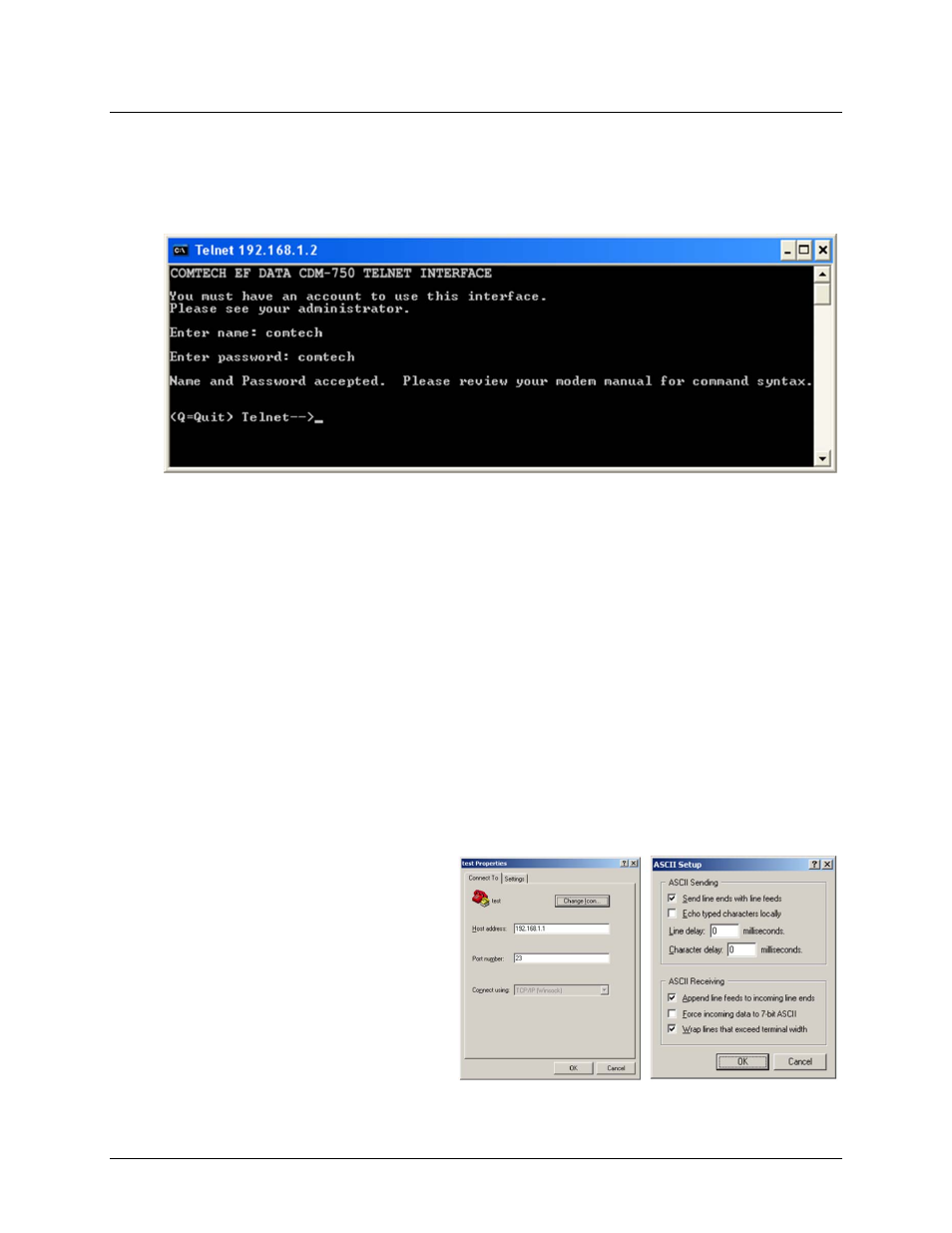4 telnet interface, 1 telnet operation via hyperterminal – Comtech EF Data CDM-750 User Manual
Page 149

CDM-750 Advanced High-Speed Trunking Modem
Revision 2
Ethernet-based Remote Product Management
MN-CDM750
6–5
6.4
Telnet Interface
A Telnet interface is provided for the purpose of Equipment M&C via the standard Remote
Control protocol. The Telnet interface requires login at the Administrator and Read/Write User
Access Levels. An example of the login process is shown here:
Once logged into the Telnet interface as the Administrator, the standard Remote Control
interface is operable and accessible as explained in Chapter 7. SERIAL‐BASED REMOTE
PRODUCT MANAGEMENT.
6.4.1 Telnet Operation via HyperTerminal
There is a disadvantage when using Windows Command‐line as a Telnet client. Since Command‐
line cannot translate a ‘\r’ (i.e., carriage return or “CR”) to a ‘\r\n’ (i.e., CR+line feed “LF”) for the
messages coming from Telnet Server, any multi‐line Target‐to‐Controller response (e.g., the
response to the FRW? query) will be displayed as one line, with the latter lines overwriting the
previous lines.
In order to view the full response messages, Comtech EF Data recommends use of the
HyperTerminal terminal emulation program, configured as a Telnet client.
Configure HyperTerminal as follows:
1.
Ensure that the connection is
made using TCP/IP (Winsock)
instead of COM1 or COM2, as
shown at the near right.
2.
ASCII Setup (File Æ Properties Æ
Settings Æ ASCII Setup): Check
the "Send line ends with line
feeds" option in the ASCII Sending
section, and the "Append line
feeds to incoming line ends"
option in the ASCII Receiving
section, as shown at the far right.
